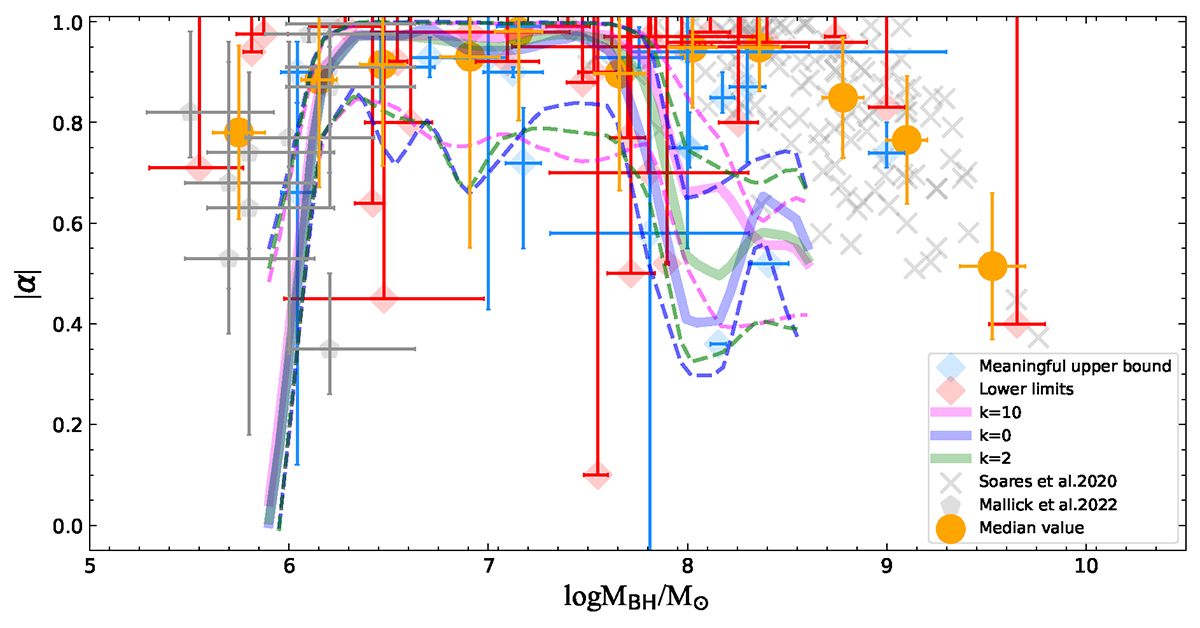Fig. 2.

Download original image
Relation between black hole spin and black hole mass for a supermassive black hole. The red diamonds are the lower limits and the blue diamonds are measurements that include a meaningful upper bound. The error bars in mass are the 1σ errors from Table 1; where that was not available, we assumed a 0.5 dex (Reines & Volonteri 2015; Koss et al. 2022; Reynolds 2021). The solid lines are the black hole spin evolution model of Bustamante & Springel (2019). The dashed lines represent 25 and 75% percentiles. For completely chaotic accretion (k = 0), the black hole spin no longer follows the angular momentum of the gas. For a very coherent accretion (k = 10), the black hole behaves similarly to during the coherent regime. Medium concentrations (e.g. k = 2) produce a slightly intermediate behaviour, where the black hole is fairly aligned with the angular momentum of the gas, but occasionally counterrotating accretion episodes still occur. The grey pentagons are observations from Mallick et al. (2022) and the grey crosses are from Soares & Nemmen (2020). The orange circles are the median values of black hole spin in each bin.
Current usage metrics show cumulative count of Article Views (full-text article views including HTML views, PDF and ePub downloads, according to the available data) and Abstracts Views on Vision4Press platform.
Data correspond to usage on the plateform after 2015. The current usage metrics is available 48-96 hours after online publication and is updated daily on week days.
Initial download of the metrics may take a while.


